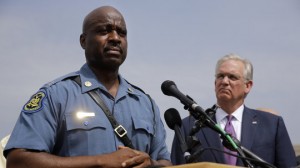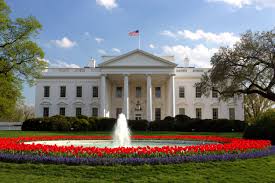Brown shooting: Police identify Darren Wilson as Officer in Fatal Shooting
Surveillance Footage of Ferguson Robbery
The Ferguson, Mo., police released surveillance camera footage that officials say shows the convenience store robbery that led to the shooting of Michael Brown.
The police in Ferguson broke their weeklong silence on Friday and identified the officer involved in the fatal shooting of an unarmed African-American teenager, as demanded by protesters and the family of the victim.
At the same time, the police released videotape and photographs that they said showed that the victim, Michael Brown, 18, was suspected of taking part in a robbery at a convenience store shortly before the shooting.
Later, however, at an afternoon news conference, the police chief in Ferguson, Thomas Jackson, said the officer involved in the shooting, Darren Wilson, had not been aware that Mr. Brown “was a suspect in the case” when he stopped Mr. Brown and a companion “because they were walking down the street blocking traffic.”
The manner in which Ferguson officials disclosed the information Friday, which included a police report on the robbery but no new details about last Saturday’s shooting, set off renewed anger among residents and quickly overshadowed the release of the officer’s name.
On Friday morning, Gov. Jay Nixon and Captain Ronald S. Johnson of the Missouri Highway Patrol, an African-American who is heading the security efforts in Ferguson, tried to defuse the frustration of residents, who turned a news conference a town-hall-style meeting.
After consecutive nights in which the police fired rubber bullets and tear gas at demonstrators and made more than 50 arrests, residents spoke about their fear of the police and peppered Governor Nixon and Captain Johnson with questions related to a broad range of social issues, including the lack of racial diversity among police forces in the area and problems with the quality of local schools.
After a peaceful night Thursday, after several nights of violent confrontations, concerns grew on Friday that the release of details about the convenience store robbery would stoke more disorder.
Pleading for calm, Captain Johnson said, “In our anger, we have to make sure that we don’t burn down our own house.” He added, “That does not prove a point.”
 Captain Johnson said he had not been told how the authorities planned to release the information, but said, “I would have liked to have been consulted.”
Captain Johnson said he had not been told how the authorities planned to release the information, but said, “I would have liked to have been consulted.”
Later, Chief Jackson said he had released material related to the robbery simultaneously with the long-awaited disclosure of the officer’s name because news media organizations had requested both pieces of information.
“We didn’t have good cause not to release it,” Chief Jackson said. “We’ve had this tape for awhile.”
Nonetheless, Benjamin L. Crump, a lawyer for the Brown family, said, “Nothing, based on the facts before us, justifies the execution-style murder by this police officer in broad daylight.”
Mr. Crump said that he and the Brown family were “flabbergasted” that the police would release security camera photos from the store, which the police say show Mr. Brown, but none of Officer Wilson.
“The police are playing games here, and the parents are beyond incensed with the way that the police are handling the distribution of information,” Mr. Crump said. “The police are not being transparent.”
But Chief Jackson said he would have been criticized if he had made the robbery video public before revealing the identity of Officer Wilson. “If I had released that tape but not the officer’s name, there would have been similar questions,” he said.
The initial refusal of Chief Jackson to reveal the officer’s name galvanized demonstrators and prompted civil rights groups to go to court to force its release. Chief Jackson had said that his unwillingness to disclose the name was based on safety concerns after death threats were posted on social media against the officer and his family.
Capt. Ronald S. Johnson of the Missouri Highway Patrol, who is heading the security efforts in Ferguson, Mo., said in a news conference that the standoff between protesters and the police had eased.
The security camera videotape released Friday by the department showed a confrontation inside the convenience store about 15 minutes before the shooting. The images show a man, identified by the police as Mr. Brown, who appears to be pushing a store clerk.
The police said that Mr. Brown, who was in the store with a friend, had stolen a box of Swisher Sweets cigars. When confronted by the clerk, Mr. Brown “forcefully pushed him back into a display rack” before leaving, a police report said.
On Thursday, Governor Nixon ordered the Missouri Highway Patrol to take control of security and crowd control in Ferguson, replacing the St. Louis County Police Department, which had been criticized for its heavy-handed tactics against protesters. Wednesday night’s demonstration ended with the police firing tear gas and rubber bullets into the crowd.
The difference in tactics and tone was apparent Thursday night. The armored vehicles and police cars were gone, and the atmosphere was celebratory. A street barricaded on previous nights was filled with slow-moving cars blasting their horns. There were few signs of police officers, let alone a forceful response.
Clashes between the heavily armed police officers and furious protesters in Ferguson have defined the aftermath of Mr. Brown’s death, and the latest moves came as federal and state officials scrambled to quell the growing crisis. Alarm had been rising across the country at images of a mostly white police force, in a predominantly African-American community, aiming military-style weapons at protesters.












